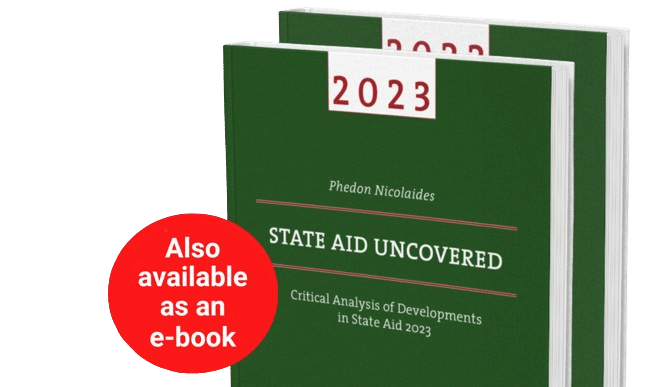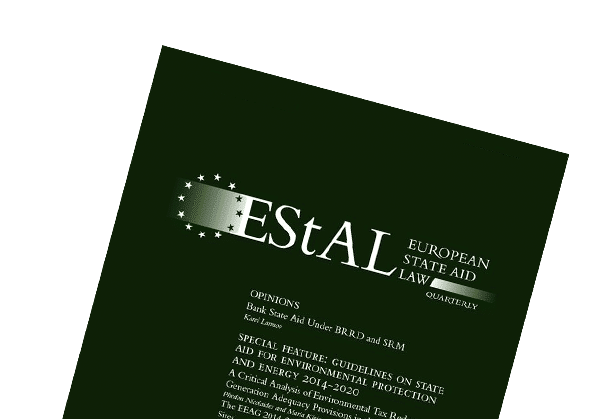
Introduction
Normally the articles in this blog identify landmark court rulings and seminal decisions of the Commission which set important precedents and provide useful guidance to State aid professionals and practitioners. This article deviates from this custom. It examines a recent case where the Commission concluded that public subsidies did not constitute State aid because intra-EU trade was not affected. However, the quality of the decision is questionable. It is not clearly reasoned and appears to be based on flimsy evidence. This decision is unlikely to be of much use to Member States. It is rather an example of what should be avoided.
The measure[1]
The main objective of the measure is to expand infrastructure and technical facilities for the development of sustainable tourism in the southeast region of the Czech Republic.
The activities which can be supported under the measure include:
– Construction of tourism infrastructure;
– Reconstruction, conservation and accessibility of monuments;
– Construction, signage and improvements to cycling routes, trails for hikers and skiers, nature trails including supplementary facilities (e.g. bicycle parking, rest areas, etc.);
– Construction, adaptations and reconstruction of access roads, including related supporting infrastructure (e.g. pavements and parking areas etc.) for tourist sites.
The financing of the measure is fully covered from the resources of the European Regional Development Fund (ERDF). The total budget is about EUR 20 million. The beneficiaries are:
– Municipalities;
– Regions;
– Non-governmental and not-for-profit organisations;
– Organisations established or set up by regions and municipalities;
– Self-governing legal entities;
– SMEs.
Profitability of projects
The maximum intensity of the support is planned at the level of 85% of the eligible costs. The high rate of aid intensity is due to the low or zero profitability of the supported projects.
Half of the sites/facilities will be accessible for free. For the sites/facilities where an entry fee will be required, the fee will constitute only a fraction of the costs. The foreseen level of the entry fees varies between EUR 1.20 and EUR 4.50.
The various projects (with the exception of the Miroslav Castle) do not generate a return on their investment within the reference period of 15 years (based on the ERDF rules) even when their residual value is factored in.
In line with the ERDF rules, the final amount of support is lowered by the amount of net revenues linked to the project. In the theoretical case that the project generates profit, such profit will either be re-invested back to the project or will be paid back to the granting authority (through a “claw-back” mechanism), in accordance with the ERDF rules concerning projects generating revenues.
Do you know we also publish a journal on State aid?

The European State Aid Law Quarterly is available online and in print, and our subscribers benefit from a reduced price for our events.
Effect on trade
Although some of the projects genuinely fall within the scope of general infrastructure, and some of them are unlikely to be economic in nature, the Commission could not declare the whole measure as not constituting State aid. Therefore, it had to examine whether the other criteria of Article 107(1) TFEU held as well. However, it focused its assessment on the affectation of trade.
The problem was that some of the projects were too close to the border. The distance of the supported projects varied between 5 and 105 km from the nearest border (either with Austria or the Slovak Republic). The Commission, therefore, had to consider how attractive the supported projects were to potential tourists from other Member States. For this purpose the Commission divided potential tourists into two categories: over-night travel and one-day travel.
With respect to over-night stay, the Czech authorities claimed that the share of Austrian tourists in the total number of over-night stays was approximately 2% for the South Moravia Region and 1% for the Vysočina Region. This was mostly due to the lower quality of tourist services in those two regions. The over-night visitors from the Slovak Republic ranked third in the South Moravia Region and fourth in the Vysočina Region in relation to the number of over-night stays of foreign tourists. It is rather strange that for Austrian tourists a precise percentage could be produced while for tourists from the Slovakia only a rank [3rd and 4th] was provided.
As for one-day tourism, the Czech authorities contended that recreation and entertainment were not the primary reasons for visits from abroad. Most of the one-day foreign visitors to the South Moravia Region come from Austria (50%) and Slovakia (41%). One-day visitors represent approximately 20-25% of the foreign tourists. This implies that one-day tourists from Austria make up about 10-12% of all tourist visits.
The Czech authorities explained that the main reason for the one-day visits was shopping (43%), working trips (28%), visits of relatives and acquaintances (14%) and only then recreation and entertainment (11%). According to the Commission, “this confirms that tourism is not the main motivation for visiting the region and that these destinations are visited primarily by domestic visitors.” [paragraph 35]. But if 11% of one-day tourists arrive for recreational purposes and 91% of those one-day visitors come from Austria and Slovakia, then it must be inferred that about 10% of the tourists who seek recreational activities are from those two Member States. Yet just a couple of paragraphs later on, it is claimed that “the share of Austrian visitors on the total number of visitors of touristic attractions in the South Moravia Region is only at the level of a single digit percentage unit.” [paragraph 37]
In relation to tourism flows from Slovakia, the Czech authorities claimed that they were oriented on visits to relatives, business trips and shopping. “Despite the fact that Slovak tourists form the biggest group of foreign visitors of touristic destinations, their share in relation to the total number of visitors of these touristic destinations is lower than 15%.” [paragraph 38]
It is evident that the analysis of the effects on trade is not solid. While the measure covers the whole of the Southeast region of the Czech Republic, the various statistics focus on specific sub-regions. The statistics seem to provide a contradictory picture. Although it is claimed that tourists from Austria are not more than one or two percentage points, if one draws inferences from the overall statistics, then the share of Austrian tourists rises to at least 5%. This is a significant number for finding affectation of trade. The share of 15% for Slovakia is certainly very significant.
But above all, the distinction between over-night visits and one-day visits appears to be contrived. At first sight, they seem to cover different groups of visitors. But as is well-known in anti-trust practice, the definition of the relevant market is based on examination of the substitutability between similar products. In this case, it is taken for granted that a recreational tourist is different from a shopper or a business visitor. Yet, there is no evidence to support the implicit view that the shoppers who account for 43% of one-day tourists or the visitors to relatives who account for 14% of one-day tourists will not combine shopping and calling on relatives with a visit to a historic site or a monument. The fact that visitors are classified in different categories does not necessarily mean that these categories do not overlap or are hermetically closed.
If the numbers do not seem to tally up, the Commission’s formal assessment of the affectation of trade is even more perplexing.
In paragraph 44 it states “firstly, in this context, the Commission notes the explanation of the Czech authorities that the support is not expected to lead to an increased inflow of foreign tourists as the scheme rather focuses on the increase of domestic tourism.” This is an unsubstantiated statement. How can the Czech authorities distinguish between domestic and foreign tourists when they construct infrastructure and renovate historic sites?
“(45) Secondly, based on the information provided by the Czech authorities, the overnight tourism from Austria seems to be limited considering the lower quality of tourism infrastructure in the NUTS II Southeast Region. As for one-day visits from Austria, they seem to focus on shopping tourism, considering the price differences between the two countries. In regard to the tourist flows from the Slovak Republic, according to the Czech authorities they are stronger; however, thanks to the historic ties with the Czech Republic, they are oriented on visits of relatives, business trips and shopping. On the other hand, the touristic attractiveness of the region, which lacks facilities and infrastructure for mass tourism, is not internationally competitive (for overnight tourism). In this respect the Czech authorities confirm that the subsidies cannot possibly anyhow divert visitor flows from strong tourist destinations in e.g. Upper Austria.” Please note that while the statistics mentioned earlier refer to specific sub-regions with the Southeast Region, this paragraph generalises to the whole of the Southeast Region. The same comments concerning combining calls on relatives with recreation applies here too.
“(46) Furthermore, as regards the specific categories of projects, which applied for support under the notified measure (as listed in the Annex), the Commission refers to the fact that those focused on the accompanying infrastructure (parking, toilets etc.) do not seem to have an impact on the touristic attractiveness of the site/facility for visitors, i.e. on tourist flows in general; further (infrastructure) projects are generally accessible for free and thus seem to have more the character of a public infrastructure open to the public; none of the projects seems to be of internationally recognised importance.” If the projects will not affect tourist flows then why are they carried out? Even if the projects will not be of “internationally recognised importance” the crucial element here is whether they could attract more visitors from Austria and Slovakia.
“(47) The Commission also notes that the projects to be possibly supported under the notified scheme have no EU relevance. Despite the fact that some of the projects are located near borders with Austria and the Slovak Republic, these projects are of only regional importance and focus on domestic (national) tourism. Also as regards the beneficiaries, these are often local authorities or companies established by them, SMEs, non-profit, non-governmental entities or self-governing bodies.” This is a quite circular argument. It claims non-affectation of trade by asserting it. Even if the projects are of regional importance they are still capable of attracting tourists from Austria and Slovakia. The fact that the beneficiaries are SMEs, non-profit or self-governing bodies is irrelevant for the purposes of assessing the affectation of trade.
“(48) Furthermore, the requested level of subsidies is not significant and ranges approximately between EUR 0.1 and EUR 3.3 million per project. It is not likely that the advantage that the subsidy will give to the potential beneficiaries would in itself be capable of diverting the streams of investments or of creating obstacles to the establishments of foreign operators.” Any amount about EUR 200,000 is not de minimis and therefore capable of affecting trade. The absence of diversion of investment or of obstacles to establishment are not sufficient in order to conclude that trade is not affected.
On the basis of the above questionable reasoning and flimsy evidence, the Commission concluded that “(50) … the projects to be possibly supported under the notified measure are not capable of deviating foreign tourist flows and possible visitors from other Member States can be deemed to have made their decision to travel to the Czech Republic irrespective of the existence of the possibly supported sites/facilities.”
The Commission decided accordingly that the measure had no impact on intra-EU trade and, consequently, did not constitute State aid.
This is a badly reasoned Decision, mixing relevant [e.g. number of foreign visitors] with irrelevant issues [e.g. non-profit status of beneficiaries]. It uses statistics selectively and unquestioningly. It is bound to cause confusion and raise problems by creating a faulty precedent.
———————————————
[1] The text of the Commission Decision can be accessed at:
http://ec.europa.eu/competition/state_aid/cases/247108/247108_1471756_131_2.pdf


